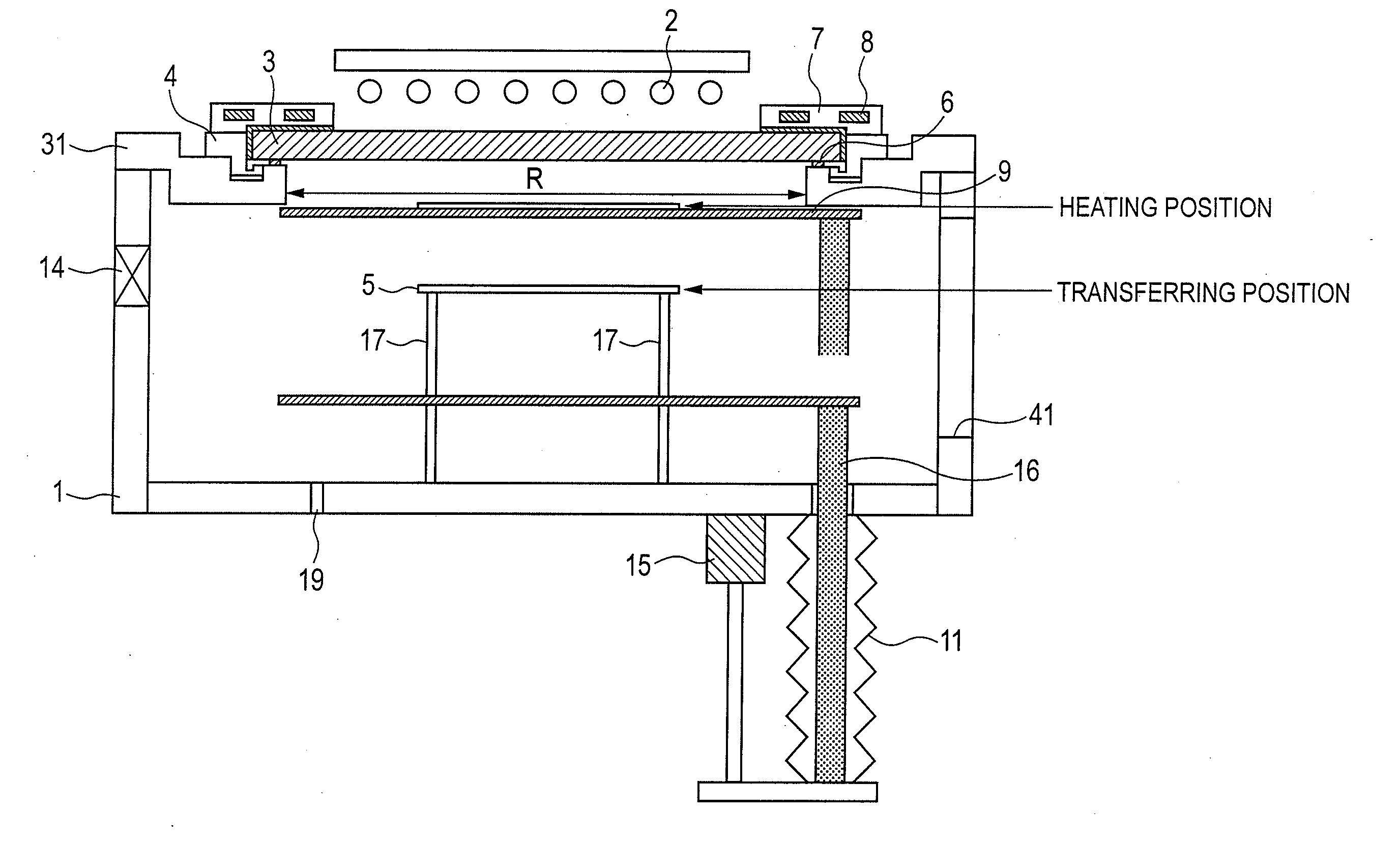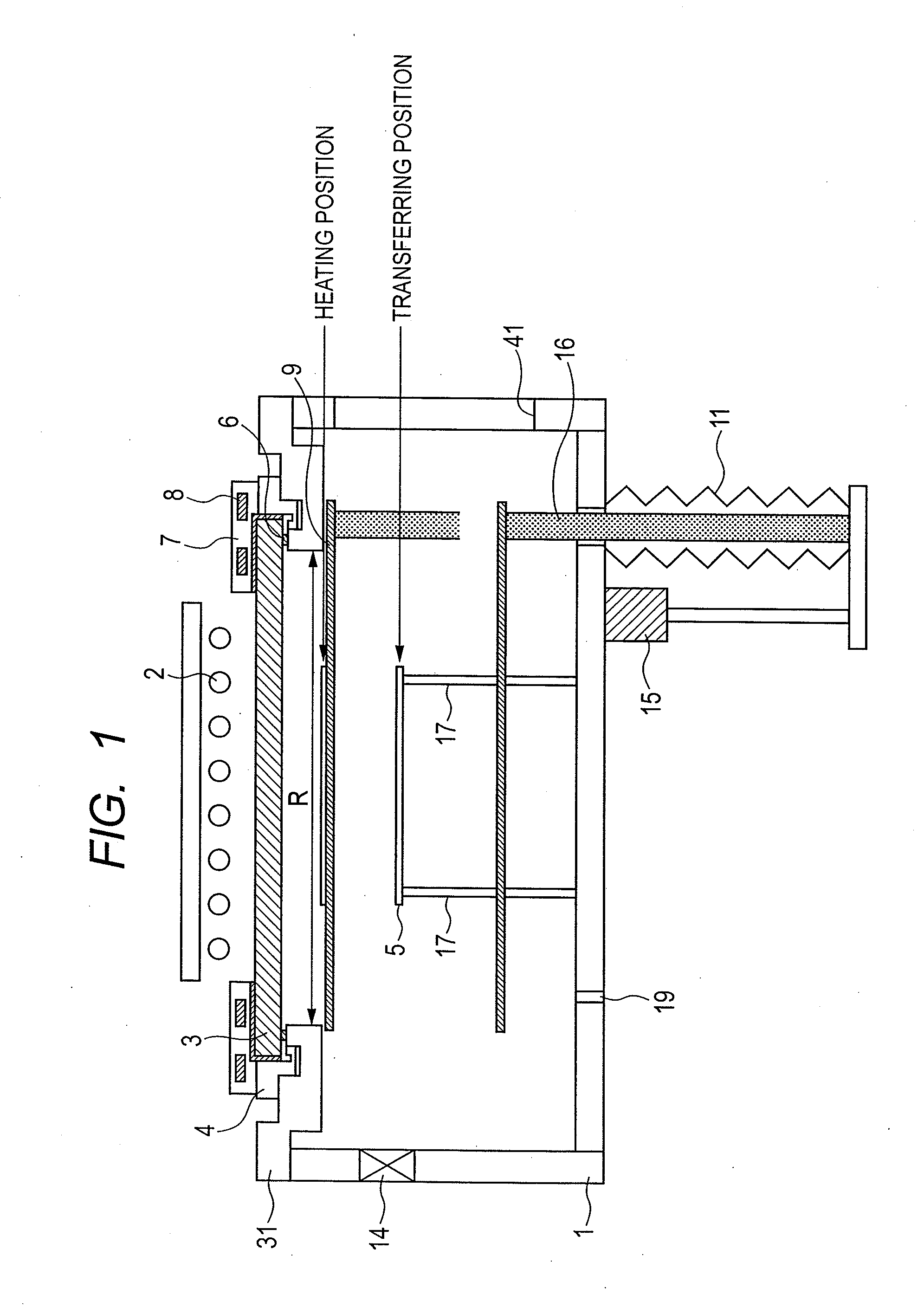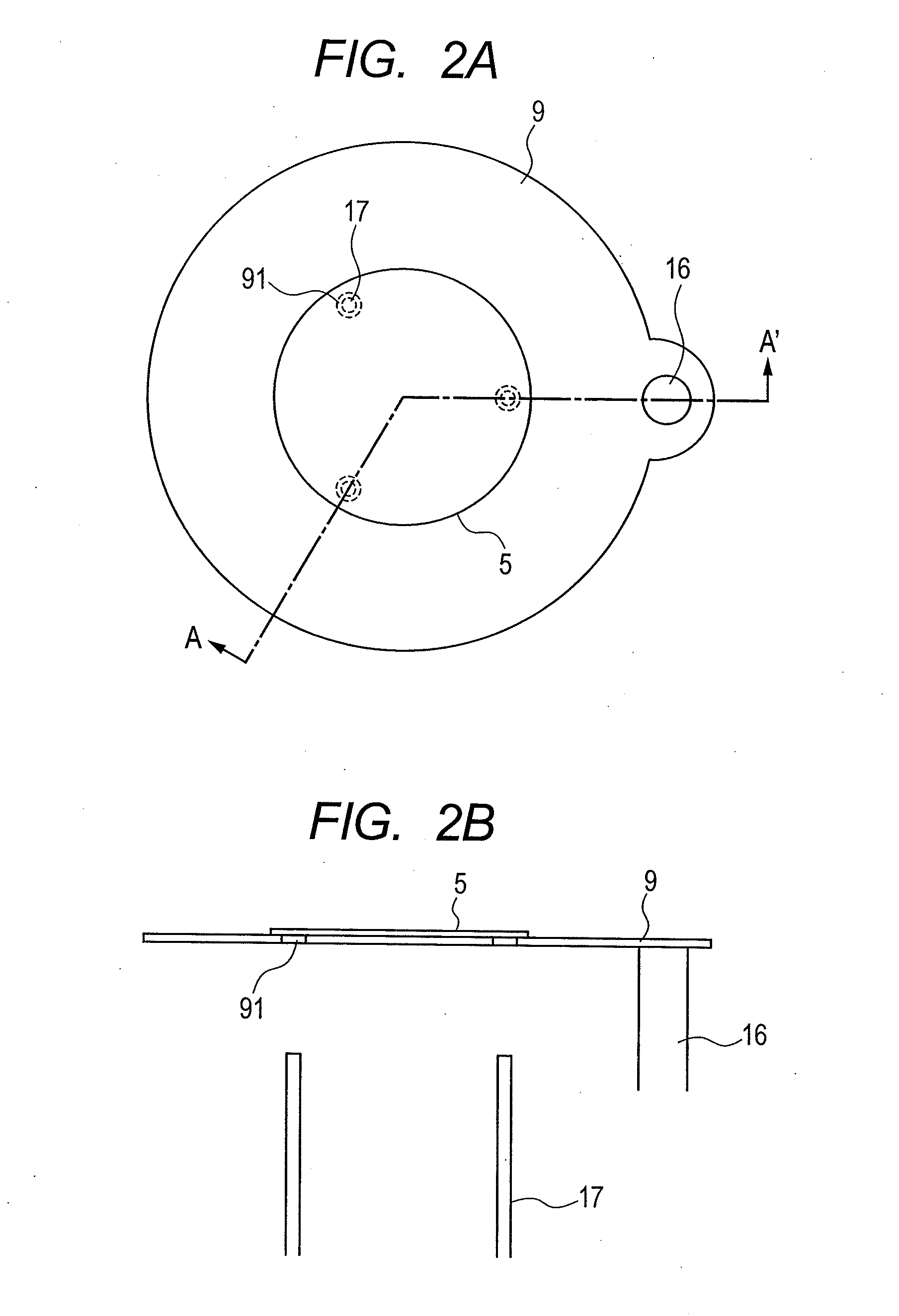Vacuum heating and cooling apparatus
a technology of heating and cooling apparatus and vacuum chamber, which is applied in the field of vacuum heating and cooling apparatus, can solve the problems of deteriorating the reproducibility of heating step and cooling step, and achieve the effects of stable heating and cooling substrate, good reproducibility, and suppressing the temperature rise of the member
- Summary
- Abstract
- Description
- Claims
- Application Information
AI Technical Summary
Benefits of technology
Problems solved by technology
Method used
Image
Examples
first embodiment
[0067]FIG. 1 illustrates the structure of vacuum heating and cooling apparatus according to the first embodiment.
[0068]In FIG. 1, a vacuum chamber 1 has a quartz window 3 fixed thereto at upper portion thereof using a vacuum-seal member (not shown), the window 3 allowing heating light coming from a halogen lamp 2 to penetrate therethrough. The vacuum-seal member is preferably a highly heat resistant O-ring such as Viton (trade mark) and Kalrez (trade mark). The quartz window 3 functions as an incidence part for causing the heating light generated from the halogen lamp 2 to enter the vacuum chamber 1. The outer shape R of the incidence part is, however, not defined by the outer shape of the quartz window 3, but is defined by the outer shape of the incidence part viewed from inside the vacuum chamber 1, or according to the example of FIG. 1, by the hole shape of a member 31 supporting the quartz window 3. As illustrated in FIG. 1, when a quartz window mounting and dismounting ring 4 i...
second embodiment
[0086]According to the first embodiment, the temperature of substrate 5 and substrate-holding member 9 after the heat treatment decreases naturally with time. However, a long time may be required to reach the room temperature level. Regarding the substrate, it can be carried-out at a high temperature. For the substrate-holding member 9, however, when a next substrate is carried-in while the temperature of the substrate-holding member 9 is not sufficiently decreased, the thermal conduction from the substrate-holding member 9 may vary the initial temperature of the substrate before the irradiation with the heating light. For the case of successive heat treatment of substrate, the effect of accumulation of heat with time in the substrate-holding member 9 induces temperature variation among substrates, which may result in poor production yield. To prevent or decrease the accumulation of heat with time in the substrate-holding member 9, in the second embodiment, a cooling member 10 is po...
third embodiment
[0094]During cooling step of the second embodiment, the substrate 5 is indirectly cooled by the cooling member 10 via the substrate-holding member 9. According to the third embodiment, for further increasing the cooling speed of the substrate, the substrate 5 is contacted with and placed directly on the cooling member 10 in the cooling step. Hence, the cooling speed can be increased. As illustrated in FIG. 15, the substrate-holding member 9 is in a ring-shape, the outer peripheral part of the substrate 5 is supported by the inner peripheral part of the ring-shaped substrate-holding member 9, and further the diameter of the cooling member 10 is designed to be smaller than the inner diameter of the ring-shaped substrate-holding member 9. More specifically, the inner diameter of the ring-shaped substrate-holding member 9 is set to 196 mm with respect to the diameter of 200 mm of the substrate, thus holding the substrate in a domain of 2 mm of the edge part of the inner peripheral part....
PUM
| Property | Measurement | Unit |
|---|---|---|
| magnetic field | aaaaa | aaaaa |
| diameter | aaaaa | aaaaa |
| diameter | aaaaa | aaaaa |
Abstract
Description
Claims
Application Information
 Login to View More
Login to View More - R&D
- Intellectual Property
- Life Sciences
- Materials
- Tech Scout
- Unparalleled Data Quality
- Higher Quality Content
- 60% Fewer Hallucinations
Browse by: Latest US Patents, China's latest patents, Technical Efficacy Thesaurus, Application Domain, Technology Topic, Popular Technical Reports.
© 2025 PatSnap. All rights reserved.Legal|Privacy policy|Modern Slavery Act Transparency Statement|Sitemap|About US| Contact US: help@patsnap.com



